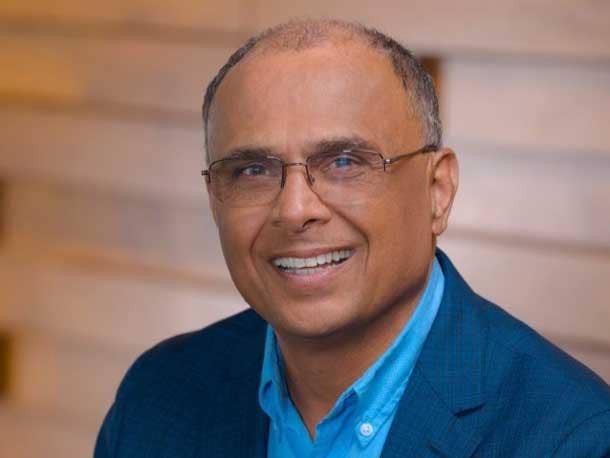Juniper Networks’ CTO On Combating The IT Talent Shortage And Creating A Diverse Pipeline Through Mentorship
‘I have always argued for this whenever I have to review somebody’s promotion to vice president. I always ask, who have they mentored? I use it in the evaluation of a person [because] they should be paying it forward,’ Juniper Networks’ Chief Technology Officer Raj Yavatkar tells CRN.

Closing The Gap
By day, Juniper Networks Chief Technology Officer Raj Yavatkar drives product and service innovation around intelligent networking, security, network virtualization, hybrid cloud, and mobile edge, to name a few. But he’s also keenly passionate about the power of mentorship and helping others realize and chart their leadership path in tech.
Early in his own IT career, Yavatkar was alarmed by the fact that many engineers were struggling to map out their careers and find ways to advance that didn’t immediately translate to leaving the company to find the next gig. It sparked an idea: the tech veteran began teaching career development classes and created an internal career development template, which has been adopted by several the of the world’s largest tech companies. These days, Yavatkar is deeply involved in Juniper Networks’ mentorship program and has helped the Juniper HR team launch new programs geared toward diversity, equity, and inclusion (DEI) and advancing women in technology.
Since then, Yavatkar has been a firm believer that effective mentorship can help attract and retain technical talent, especially amid the talent gap that tech companies and channel partners are grappling today.
Yavatkar spoke with CRN about creating his own tech development courses — which he has successfully implemented at Intel, VMware, Google Cloud, and now, Juniper Networks — how tech leaders can identify and develop talent at all levels through mentorship, and how mentorship can pave the way for greater diversity in tech.
Here are excerpts from the conversation.

Tell us about when you discovered the importance of mentorship
My journey started with Intel, then VMware, Google Cloud, and now [Juniper Networks]. Throughout my career, I have focused on helping people and mentoring. I started doing that because [of] Andy Grove [Hungarian-American businessman and third CEO of Intel], who was a great leader and strategist. He used to say that mentorship is important. He mentored people, but he also got mentored. One of the things I’ve thought about over the years is how mentors are different from coaches and managers. Managers are trying get the best output, so always telling you to finish your quarterly goals and deliverables. A coach, like in basketball, [is] sitting on the sidelines yelling at you: ‘Do this, don’t do this, do this.’ I do believe that mentor is something different from manager. A mentor’s job is to put herself or himself in your shoes, be more empathetic, create possibilities, rather than giving you instructions on when to shoot.

How can mentorship help people reach the next level in their careers?
I’ve noticed a lot of people want to have a mentor, but they don’t know what they want out of the mentor. They think the mentor will simply tell them what to do and they will advance in their career or something. So, the most important thing was to start making this distinction that the mentor is there to help you in a very different way — to ask you about possibilities and whether [you’ve] considered this or that. I’ve noticed that, over the years, the engineers are really poor at telling somebody what they want in [their] career. And what happens from company perspective, is that when they get an offer from somebody else, offering them something higher than the work they are doing, they leave to do that. That’s why I started this program at Intel first and then at Google. I called it Career Development 101. It’s like a software development lifecycle … you set a target. What you want to be in three to five years? Once you set that target, you need to demonstrate if you’re already operating at that level. Once you do that, then you start asking questions to different [people]. Ask your manager, ask your peer: “What do you think about my goal [and] is it what my abilities are?’ This is the feedback, so then let’s do a gap analysis: ‘That is my goal. This is where the gaps [are] and based on the gap analysis, let’s develop a plan. That could be communication skills or working on something completely new — [maybe] you have to expand your technical skills. Once you do that, every quarter, you ask your mentor: ‘How am I doing toward that goal?’
It’s almost like a machine and people understand that because that’s why they do software development or product development. I used it first at Intel and VMware when I started teaching that [career development] class. I found it really useful [and] really effective. I use it myself for my own career. It’s useful [at Juniper] as part of our HR process that leads to [identifying] people who are going to be mentors and leaders and how they should use their mentorship role to help in this process.

Are your career development classes open to anyone, regardless of what stage of their career they are in?
It’s open to anyone and it’s pretty important for people early in their career [like] Gen Z. Some of them are more motivated for different reasons. They want different lifestyles and mentorship for them is really important. People who are in the middle part of their career, they need [mentorship] the most because they’ve come to a point when they don’t know how to grow. What I found is that a lot of women, they feel like they get sidelined very easily. [Some are] not as vocal and they get passed over. I think women need different types of mentorship because many times, they are not noticed, and they have to make themselves noticed. There is a certain, methodical way to go about it requires you to advertise or publish what you want. That’s a very hard step that many people in middle management [or] the middle level of their career, so they especially find this mentorship class very useful.

How can mentorship and career development help build a pipeline for diverse talent?
[Career development courses] can be used to create a pipeline for a more diverse staff because [many people] suddenly come to a stage in life where they are an individual contributor and nobody asked them: ‘Do you want to manage a team?’ This process helps them identify or think about their goals. That’s the role of the mentor. ‘Oh, you want to develop into a manager? That’s great, let’s look at the possibilities.’ I have one engineer — she’s very good. She was in software development and user experience and now, she wants to become manager. And nobody asked her, so she was very frustrated, and I just happened to ask her: ‘Have you considered this verses that?’ And it’s good to sort of just start creating such possibilities rather than instructing people on what to do. The mentorship program itself has expanded to every [department]. The Juniper HR department created a company-wide program, and we created a separate program for women. We want to focus on women leadership and mentorship for them and finding people from inside and outside to mentor them.
The same program is useful for creating a pipeline for diversity. If you go to historically Black colleges and universities, which happened to be on the East Coast — when I visited, they did not want to come to the West Coast. But providing mentorship to undergraduates allows them to start looking at these possibilities. I noticed the same thing in Texas and California, especially in schools with a large number of Hispanic students — this creates a hiring pipeline if you can have mentorship programs there. And once they get hired, they are in a very unfamiliar environment. So, having mentors for them also helps.

What’s your advice to channel companies that want to launch career development programs for their employees?
The first thing is, every manager and leader should be required to spend some time being a mentor. That should be one of the characteristics we expect. And then to start the program, you can start small. You can use the career template, which I’ve used at four companies now. It’s a great way to create structure and retain talent. But that’s where we start — it doesn’t have to be formal HR program. You can make it formal in the HR program later. I have always argued for this whenever I have to review somebody’s promotion to vice president. I always ask, who have they mentored? I use it in the evaluation of a person [because] they should be paying it forward.
[Mentorship] and creating a diverse pipeline — I do believe that every company, every manager, every leader, should consider these things that can give you a competitive advantage. Especially in today’s world.